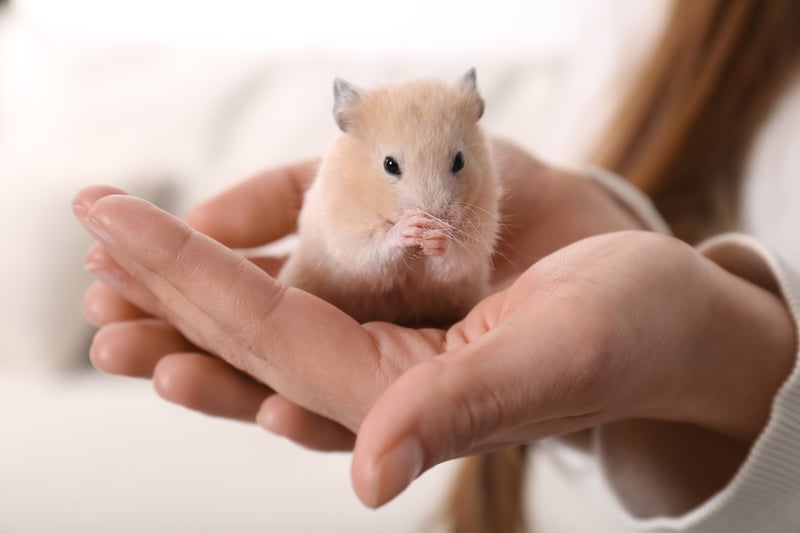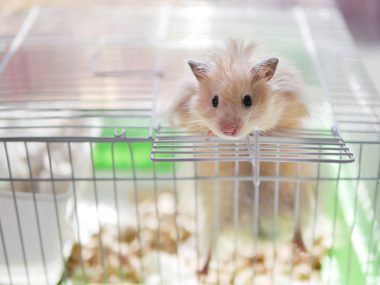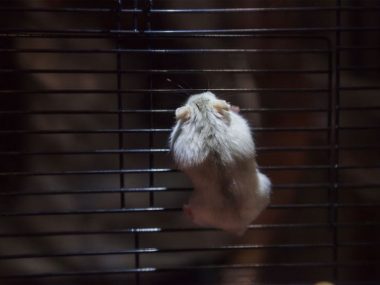So you’ve just acquired a new hamster, and you want to pick it up and play with it, but it’s terrified! You’ve tried waiting and allowing it to get used to its new environment, but it still hides from you or fights to get free each time you hold it. A frightened hamster can be frustrating for someone who wants to bond with their new pet.
To pick up a hamster without scaring it, you must take steps to make it comfortable and do the following:
- Make the journey home easy for your hamster.
- Give your hamster space.
- Introduce your hand.
- Give your hamster treats.
- Pet your hamster.
- Pick up your hamster without scaring it.
With patience, you will have your hamster eating out of your hand in no time. Read on to find out how!
Table of Contents
1. Make the Journey Home Easy for Your Hamster
On the way home with your hamster, try to make your surroundings as quiet as possible. This means no loud music, honking your car horn like a maniac, or taking the hamster out of its box.
Once you’re home, immediately put the hamster in its new cage. If the hamster is aggressive or likely to bite, you might want to use gloves to avoid injury. Or you can (gently) tip the box containing the hamster so that the hamster slides into its new cage without having to be handled.
Once you’ve got the hamster settled in its new cage, wait three days before you start training it to trust you. This means leaving the hamster alone as much as possible. Sticking your hand or your fingers in the cage, even if you don’t touch the hamster, could cause the hamster stress and anxiety.
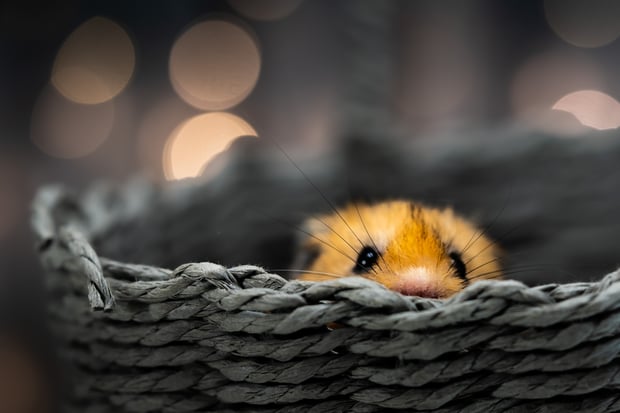
Also, try not to move the cage, shake it, or even briefly pick it up. Physically moving the cage will also cause the hamster stress, and you want it to be as calm as possible once you begin training it to trust you.
2. Give Your Hamster Space
As mentioned before, hamsters need time to get used to their new environment and their new owner. Moving to a new cage and environment is very stressful for a hamster, and if the stress is prolonged, it can lead to physical illness!
Instead of immediately picking up and handling the hamster, don’t touch it. Sit near the cage, talk to it, read, or even sing. Your hamster needs to get used to the sound of your voice and your smell.
3. Introduce Your Hand
Continue what you’ve been doing in Week 1, but now put your hand just inside the door of the cage. Don’t touch the hamster. Just rest your hand in the cage door. If the hamster approaches to sniff, let it sniff your hand but don’t try to touch it.
“Introduce” your hand every day to the hamster. Eventually, it will become used to the sight of your hand and your hand’s smell, and it won’t assume that the presence of your hand means danger.
4. Give Your Hamster Treats
As with most new pets, treats are the easiest way to tempt a hamster into trusting you. There are several things you can give your hamster, including:
- Raisins
- Apples
- Sunflower seeds
There are also commercial goodies available on Amazon that will make your hamster come running!
- Kaytee Fiesta Healthy Toppings Papaya Treat is deliberately designed for bonding with a small rodent. The treats are small squares, forcing the hamster to draw close to your hand. They are also a healthy snack and won’t put your hamster at risk if fed in moderation.
- Kaytee Food From the Wild Natural Snack, which is full of healthy foods that small rodents would eat, including strawberries, carrots, and spinach. There are no added sugars or artificial flavors, making it safe for hamsters, who are prone to diabetes.
- Kaytee Fiesta Krunch-A-Rounds with Peanut Center is another fun treat you can give to your hamster while training it to trust you. As the product description says, the crispy coating will “satisfy your hamster’s need to chew” while also building a bond with you. Before long, your hamster will lose its fear as it begins to associate delicious treats with your hand!
5. Pet Your Hamster
If you’ve made it to Week 4, your hamster should have built up a sense of trust and learned not to panic each time your giant hand appears in the cage door. It should be taking treats from your hand without fear, approaching your hand to sniff it, and showing no signs of stress. If this is the case, you should now be able to pet your hamster.
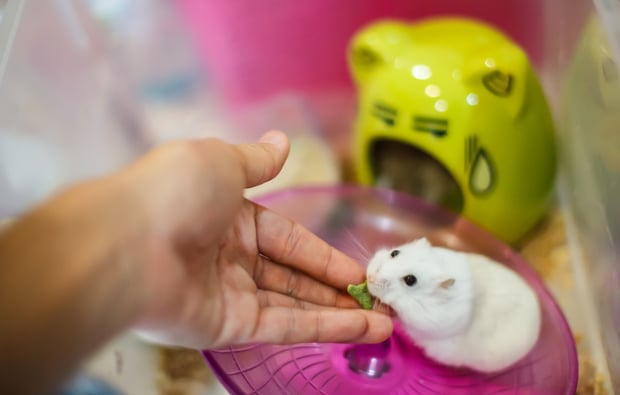
However, if your hamster is still biting, running, hiding, and is a nervous wreck, you should repeat the steps of the first three weeks for another week and then try again. Remember, patience is key.
6. Pick Up Your Hamster Without Scaring It
If your hamster is tame, calm, and trusting, the time has finally come that you may pick it up. The absolute best way to pick up your hamster without hurting it is to scoop your hands underneath and gently lift your hands.
Hamsters do not like being pinched on the back or grabbed around the middle. The pressure frightens them and will seem threatening. Gently scooping is best.
People Also Ask
- How do you pick up a scared hamster? Make your hamster like you by being gentle. Once it’s tame, you won’t have to worry about being bitten.
- What is the best way to pick up your hamster? The best way to pick up your hamster is with cupped hands that you scoop underneath.
- Will my hamster bite me if I pick it up? There’s less chance of getting bitten if your hamster is tamed and if you picked it up correctly. Scoop up the hamster with your fingers gently curled under its belly. Always use both hands.
- How do I tame my hamster? You can tame your hamster with treats and daily interaction. Interact with your hamster at least once everyday, but respect its sleeping pattern. Hamsters should not be distubred when they are sleeping because disturbing them may cause them stress.
- How do you get a hamster to let you pick it up? Build a relationship with them. Patience is key when it comes to training a hamster, since they are prey and have evolved to fear larger animals. Teaching them to go against their instincts will take time.
- Can I hold my hamster with gloves? If your hamster is untrained and untame, then thick gloves may be necessary to avoid painful bites from a stressed hamster. Most gloves, even disposable gloves, will work just fine if you layer them up (wear two pairs). Try not to hold them too much if they dislike it.
Conclusion
In conclusion, an untamed hamster will bite, run, hide, and fear being handled. Training your hamster to trust you and allow you to pick it up is a long, slow process but ultimately rewarding in the end!
Sources
- Pet Helpful: How to Train Your Hamster to Let You Hold Him
- PetKeen: How to Hold a Hamster Correctly (with Pictures & Videos)
